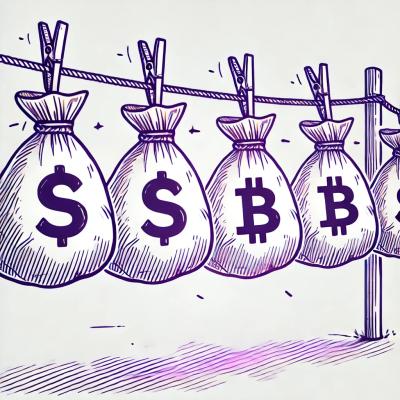



Admittance
Intro
This is a rewrite of the original incomplete V1 version of admittance. I decided that V1 was trying to do too much and that V2 should be as simple as possible, both in API and in what it actually does under the hood.
Admittance now reads permissions from plain old javascript objects. This, I think helps to keep the module doing just one thing. To load data you just need create javascript objects and store them somewhere. You could simply require a json file and load it. This also makes it very easy to work with a nosql db. Just get and set your permissions to the db.
Usage
Super basic usage
var admittance = require('admittance')
var permissions = {
'admin': 'subscriber'
}
var assignments = {
1: 'admin'
}
var user = admittance(permissions, assignments)
user(1).is('admin')
user(1).isnt('admin')
Full featured usage
var permissionData = require('/some/example/permissions.json')
, assignmentData = require('/some/example/assignments.json')
, admittance = require('admittance')
var user = admittance(permissionData, assignmentData)
if (user(1).is('admin'))
console.log('user 1 is an admin')
if (user(1).is('reportViewer'))
console.log('user 1 is a report viewer')
if (user(1).is('editor'))
console.log('user 1 is an editor since admin is a parent of editor')
if (user(1).is('user'))
console.log('user 1 passes a user check since admin is a parent of user')
if (user(1).isnt('superadmin'))
console.log('user 1 isnt a superadmin since superadmin is a parent of admin')
if (user(1).can('readPosts'))
console.log('user 1 can read posts')
if (user(1).can('listPosts'))
console.log('user 1 can list posts')
var post = {
creator: 1
}
if (user(1).can('editPosts', post.creator))
console.log('user 1 can edit the post because he/she created it')
if (user(1).can('editPosts', post.creator === 1))
console.log('user 1 can edit the post because the given business rule passed')
if (user(1).can('deletePosts'))
console.log('user 1 can delete posts')
if (user(1).can('manageUsers'))
console.log('user 1 can manage users')
if (user(1).can('readReports'))
console.log('user 1 can read reports')
if (user(1).can('listReports'))
console.log('user 1 can list reports')
if (user(1).cant('eatCake'))
console.log('user 1 cant eat cake since the cake is a lie')
Writing permissions
Permissions are strings or an array of strings. The strings are simply permission names that make sense for your application context. Permissions can be parents for other permissions and they in turn
can be parents to further permissions etc. Define these hierarchies however you see fit.
When it comes time to check, admittance with traverse your permission hierarchy to determine
if a given user has a given permission.
example:
{
"user": [
"readPosts",
"listPosts"
],
"editor": [
"user",
"editPosts",
"deletePosts"
],
"admin": [
"manageUsers",
"editor"
],
"superadmin": "admin",
"reportViewer": [
"readReports",
"listReports"
]
}
Writing assignments
Admittance expects a simple map from userids to permissions (defined in permissions map)
A userid can be assigned a single permission string or an array of permissions strings.
example:
{
"1": ["admin", "reportViewer"],
"2": "editor",
"3": "user"
}
Business rules
Business rules are extra tests relevant to your application that go along side
permission checks. An example of this is when you have a user that is allowed
to edit posts ONLY if he or she is the owner (creator) of that post.
Business rules allow you to provide such tests along side permissions checks.
Simple id matching
A simple and useful way to solve the example above in admittance is to simply
pass a matching id as a second parameter to your check. Admittance will then
verify that this id matches the user id.
Heres an example of how that might look:
var permissions = {
'editPosts'
}
var assignments = {
2: 'editPosts'
}
var check = admittance(permissions, assignments)
var user = {
id: 2,
name: 'Mr Banana'
}
var post = {
id: 1
owner: 2
}
check(user.id).can('editPosts', post.owner)
Expression checking
Another simple way to add custom checks to specific checks is to pass an
expression that evaluates to true or false as a second parameter to is,
can, isnt or cant
Example:
var permissions = {
'editPosts'
}
var assignments = {
2: 'editPosts'
}
var check = admittance(permissions, assignments)
var user = {
id: 2,
name: 'Mr Banana'
}
var post = {
id: 1
owner: 2
}
check(user.id).can('editPosts', post.owner === user.id)
API
admittanceModule(permissions, assignments)
Load permissions and assignments from js objects and return an admittance instance. See Writing permissions and Writing assignments for how to write permissions and assignments objects
Parameters:
- permissions
<object> - assignments
<object>
Returns:
- admittance
<object> - An admittance function that can be used to check permissions
Example:
var admittanceModule = require('admittance')
var permissions = {
'admin'
}
var assignments = {
1: 'admin'
}
var admittance = admittanceModule(permissions, assignments)
admittance(userid)
Parameters:
Returns:
<object> - An object with properties is, isnt, can and cant
Example:
var userId = 1
admittance(userId)
.is(permission, [expression])
Test if an 'id' given as a parameter to admittance can be matched with given 'permission'
performing optional additional checks via a given expression or id
Parameters:
- permission
<string> - the permission to check (eg. 'admin') - [expression]
<string|int|bool> - optionally, supply one of the following:
- An expression that resolves to a boolean. eg.
user.id === post.owner - A numeric string to match against
userid eg. '1' (will internally be checked against userid) - A number to match against
userid eg. 1 (will internally be checked against userid)
Returns:
<boolean> - true if the given userid is said to have given permission and optionally the userid matches the given matchingid
Example:
admittance(userid).is('admin')
admittance(userid).is('admin', 2)
admittance(userid).is('admin', '2')
admittance(userid).is('admin', 1 === 1)
admittance(userid).is('admin', 1 === 2)
.isnt(permission, [expression])
Opposite of is. Equivalent to negating a call to is
Parameters:
- permission
<string> - [expression]
<string|int|bool> - optionally, supply one of the following:
- An expression that resolves to a boolean. eg.
user.id === post.owner - A numeric string to match against
userid eg. '1' (will internally be checked against userid) - A number to match against
userid eg. 1 (will internally be checked against userid)
Returns:
Example:
admittance(userid).isnt('admin')
admittance(userid).isnt('admin', 2)
admittance(userid).isnt('admin', '2')
admittance(userid).isnt('admin', 1 === 1)
admittance(userid).isnt('admin', 1 === 2)
.can(permission, [expression])
Alias for is
Parameters:
- permission
<string> - [expression]
<string|int|bool> - optionally, supply one of the following:
- An expression that resolves to a boolean. eg.
user.id === post.owner - A numeric string to match against
userid eg. '1' (will internally be checked against userid) - A number to match against
userid eg. 1 (will internally be checked against userid)
Returns:
Example:
admittance(userid).can('editPosts')
admittance(userid).can('editPosts', 2)
admittance(userid).can('editPosts', '2')
admittance(userid).can('editPosts', 1 === 1)
admittance(userid).can('editPosts', 1 === 2)
.cant(permission, [expression])
Alias for isnt
Parameters:
- permission
<string> - [expression]
<string|int|bool> - optionally, supply one of the following:
- An expression that resolves to a boolean. eg.
user.id === post.owner - A numeric string to match against
userid eg. '1' (will internally be checked against userid) - A number to match against
userid eg. 1 (will internally be checked against userid)
Returns:
Example:
admittance(userid).cant('editPosts')
admittance(userid).cant('editPosts', 2)
admittance(userid).cant('editPosts', '2')
admittance(userid).cant('editPosts', 1 === 1)
admittance(userid).cant('editPosts', 1 === 2)
Tests
npm install
npm test
Example (see it in action by running the example)
npm install
npm run example







